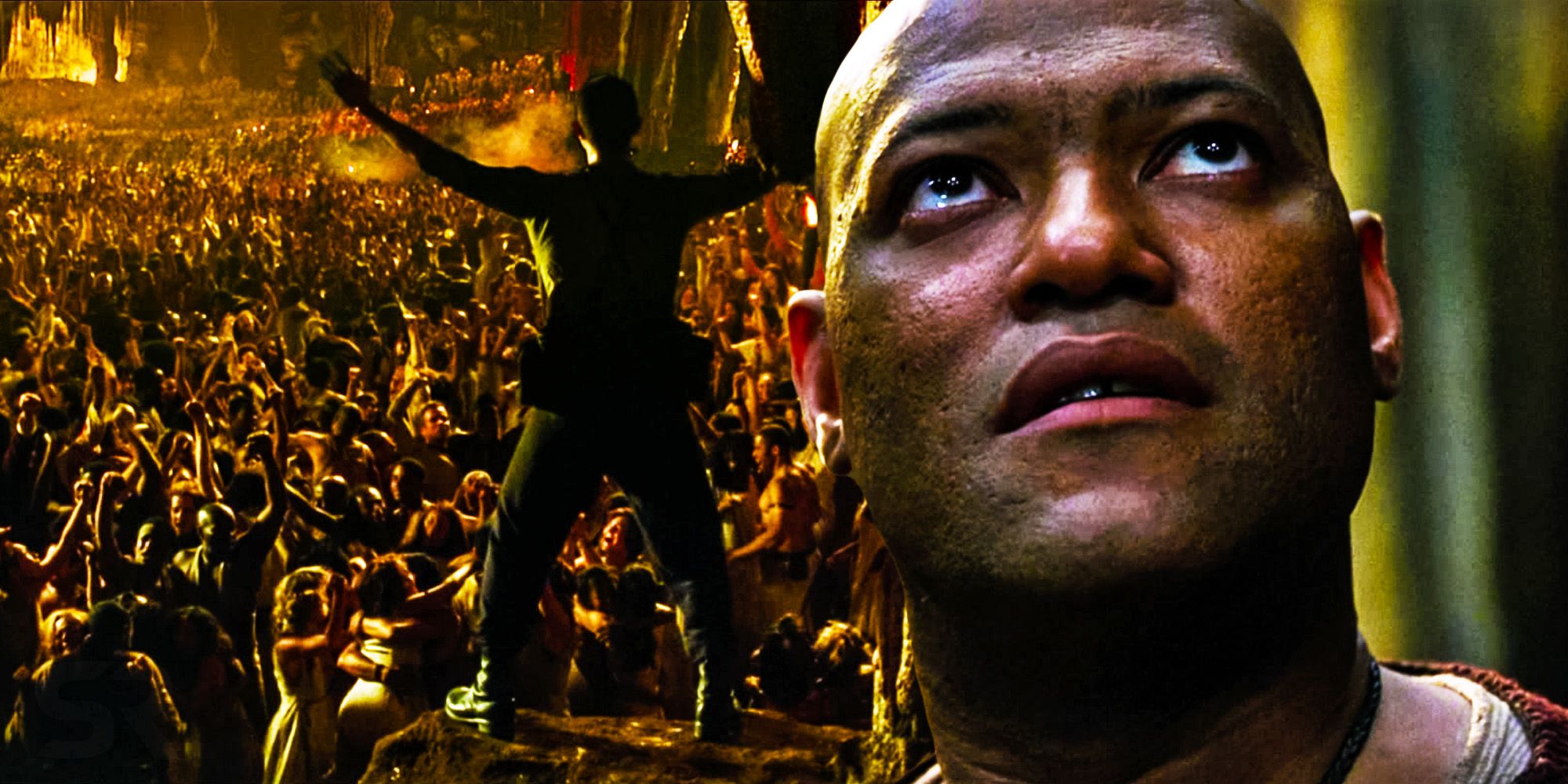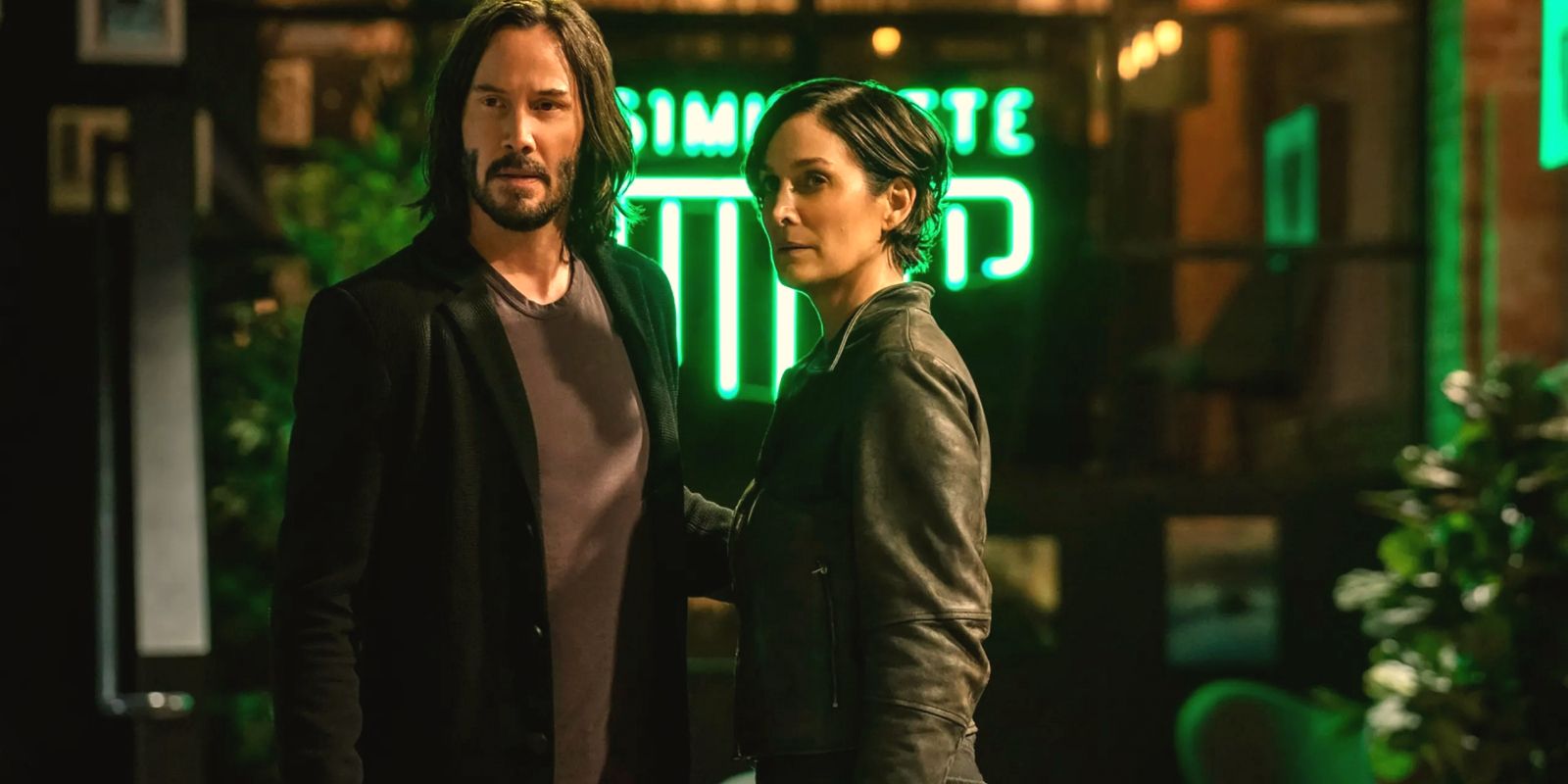The Matrix Resurrections picks up 60 years after the original trilogy when free humans have left Zion for the hidden sanctuary IO, prompting the question of what happened to Zion after the original Matrix trilogy. The new enclave is much more spacious and prosperous than the besieged, struggling Zion. The latest film updates the franchise's mythology and explains Zion's fate.
The Matrix took over theaters in 1999 and cemented the Wachowskis' places in film history. Preceded by a masterful marketing campaign that stoked widespread curiosity without spoiling anything, the original movie dazzled audiences with a perfect mix of groundbreaking visuals, exhilarating action, and a reality-bending narrative. An animated world-building anthology, The Animatrix, premiered quietly in 2003, followed by two direct sequels to the first film that same year. While The Matrix Reloaded and The Matrix Revolutions did well at the box office, many felt disappointed that neither fully recaptured the original's magic. The revival The Matrix Resurrections arrived in December 2021, to mixed reactions.
In The Matrix Resurrections, however, it is not Zion where the surviving humans live, but a new city named IO. General Niobe explains to Neo that Zion was destroyed in a Machine Civil War. The machines had honored the peace agreement Neo and Deus Ex Machina reached at the end of the original trilogy and allowed free passage for all humans from the Matrix to Zion. However, the machine world suffered an energy crisis when so many humans unplugged from the Matrix. An ensuing resource war between multiple Matrix machine factions spread and engulfed Zion, forcing humanity to flee and establish a new sanctuary. This war created the opportunity for the new villain, The Analyst, to take control and enslave humanity anew.
Why The Matrix Resurrections Replaced Zion With IO
The filmmakers offer a plausible, engaging backstory to connect the earlier films to the new setting. The new movie manages to become more than just a retread, though, because of Neo's lasting impact upon the machines at the end of Matrix Revolutions. Following Neo's showdown with Smith, many machines had gone to Zion to explore the human world alongside all the newly emancipated people. Humanity and its creations forged new, cooperative relations from those early encounters. Humans and synthients fled Zion together and later built IO together, one of the many changes revealed in The Matrix Resurrections. As the story unfolds, Niobe directly credits the synthients' contributions to the new settlement's relative splendor, and synthients willingly fight aggressive machines alongside humans. Resurrections' overarching conflict is no longer the original man vs. machine face-off but a fight between a coalition of free beings and those who would enslave them.
By redeeming the machines on such a mass scale and showing what former adversaries can build in a time of peace and cooperation, The Matrix Resurrections offers hope and optimism scarcely glimpsed in the original movies. IO is more than a mere refuge, it is a sun-bathed, strawberry-rich achievement that humans and synthients alike will fight to protect. It is a better home for a better humanity, more vital for their inclusion of synthients. IO symbolizes a better path forward and thematically reinforces Neo and Trinity's triumphant reunion at the film's end.
The Matrix Resurrections hints at more sequels to come. Though it sets the stage for potentially exciting stories, its box office suffered from a pandemic-era release, and prospects for more adventures are uncertain. Audiences and critics generally seem to prefer the heroes' happier ending in The Matrix Resurrections to their tragic deaths in The Matrix Revolutions, so perhaps it will stand as a better final chapter for the series.


